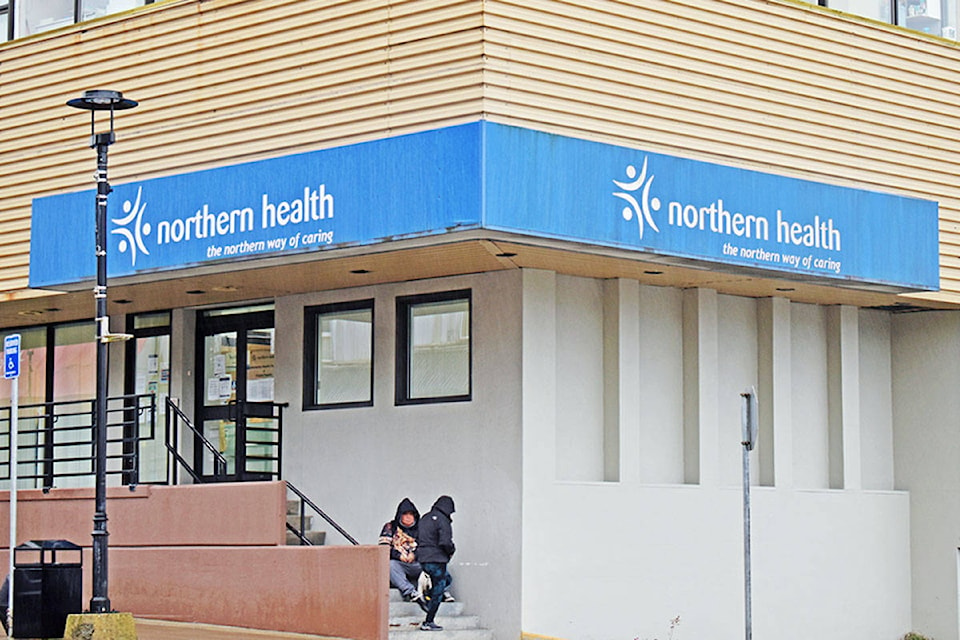Recent changes to COVID-19 notification and contact tracing procedures made by Northern Health are confusing and concerning to some Prince Rupert employers and organizations, Shauna Wouters chief administrative officer at Hecate Strait Development and Employment Society said, on Feb. 10.
“There is now no contact tracing for people outside of ‘high risk’ groups,” Wouters said. “People in low-risk groups are told to do their own notifications to people they have been in close contact with.”
This means the health authority is no longer contacting many employers, organizations, or those considered ‘close contacts’ to notify them of COVID-19 exposures or lab-confirmed cases of the virus.
“As of December 10th, Northern Health is doing contact tracing for high priority or high-risk groups only. We’re asking people in low-risk groups who test positive to tell the contacts themselves,” Eryn Collins communications manager for Northern Health told The Northern View on Feb. 10.
“This is a big responsibility to put onto the individual that has been infected,” Wouters said.”What is a business or employer supposed to do when they are contacted by an employee who has been confirmed positive. There is no information or procedure to follow.”
Wouters said that while employers have mandatory COVID-19 safety plans, dealing with an individual’s private health information or making health decisions about next steps should not fall within an employer’s domain. As well there are employee confidentiality and privacy issues she said.
“It raises a lot of questions. This is a concern for me, my team at work, and the people we serve,” Wouters said. “We have a duty to keep our workplaces safe,”.
Collins said changes to the contact tracing and notification procedures were necessary and streamlining the process is improving contact tracing in high-risk categories.
Northern Health made the shift in December to focus on the detailed contact tracing efforts of high risk or priority groups and close contacts in certain situations such as school-related cases, health care workers, those in long term care, those related to industrial projects, First Nations communities, or any that were part of a known cluster.
“That focus was to make sure that (contact tracing teams) could respond quickly to developing clusters of cases or potential outbreaks for people who were most vulnerable,” Collins said.
Collins explained that back in December when COVID-19 case numbers started to surge in the region, this placed significant pressure on the public health teams and contact management teams, also known as ‘contact tracing teams’.
At that time each person who was confirmed positive would receive notification of the result by text message, online, or via phone call. That initial notification would be followed up by a second phone call from Public Health to discuss personal circumstances and length of necessary isolation. A third phone call would be made to ‘discharge’ the case at the end of the isolation period.
The surge in cases created a backlog delaying notification phone calls by four or five days which in turn created confusion for many waiting on results.
“It was taking an inordinate amount of time, higher than what would have been preferred before public health could call. Public Health calls everyone who tests positive for COVID-19 as soon as possible,” she said.
Collins said by that time due to the high numbers of positive cases, and rates of activity in the north, it meant everyone was at similar risk — whether or not anyone was a known close contact of a lab-confirmed case.
As well as notification changes, additional staff were hired to streamline the process allowing for newly confirmed cases to be notified in as little as a day in a lot of circumstances, Collins said.
More changes were announced by Northern Health on Feb. 8.
For further streamlining and to improve the process, Northern B.C. residents who test positive for COVID-19 will now receive only one phone call during which they will be provided with instructions, including the date the isolation will end. This will eliminate the need for the second and final discharge phone calls.
“Some people have actually expressed frustration with receiving multiple calls from public health,” Collins said. “And we were one of the only health authorities in BC still making (multiple) calls. Other health authorities have all moved as well to a single call process.”
“The overarching message continues to be, regardless of whether you are a known close contact of a confirmed case, everyone is at similar risk, because your exposure could occur in any potential setting,” Collins said. “… contact tracing doesn’t tell you, where you’ve been and how you might have been exposed … contact tracing is about forward-looking and having the people who need to take additional actions take them to prevent additional future cases.”
K-J Millar | Journalist
Send K-J email
Like the The Northern View on Facebook
Follow us on Twitter
